Bài giảng Phương pháp kiểm tra và đánh giá học tập - Chapter 4: Tests of grammar & usage
1. Multiple - choice items
the incomplete statement type with a choice of
four or five options
Seven types of multiple – choice items in the
textbook; however, item types 2 & 3 are
preferable because the options do not interrupt
the flow of meaning in the sentence: these items
present the entire sentence so that it can be read
at a glance. (read page 34 – 39)
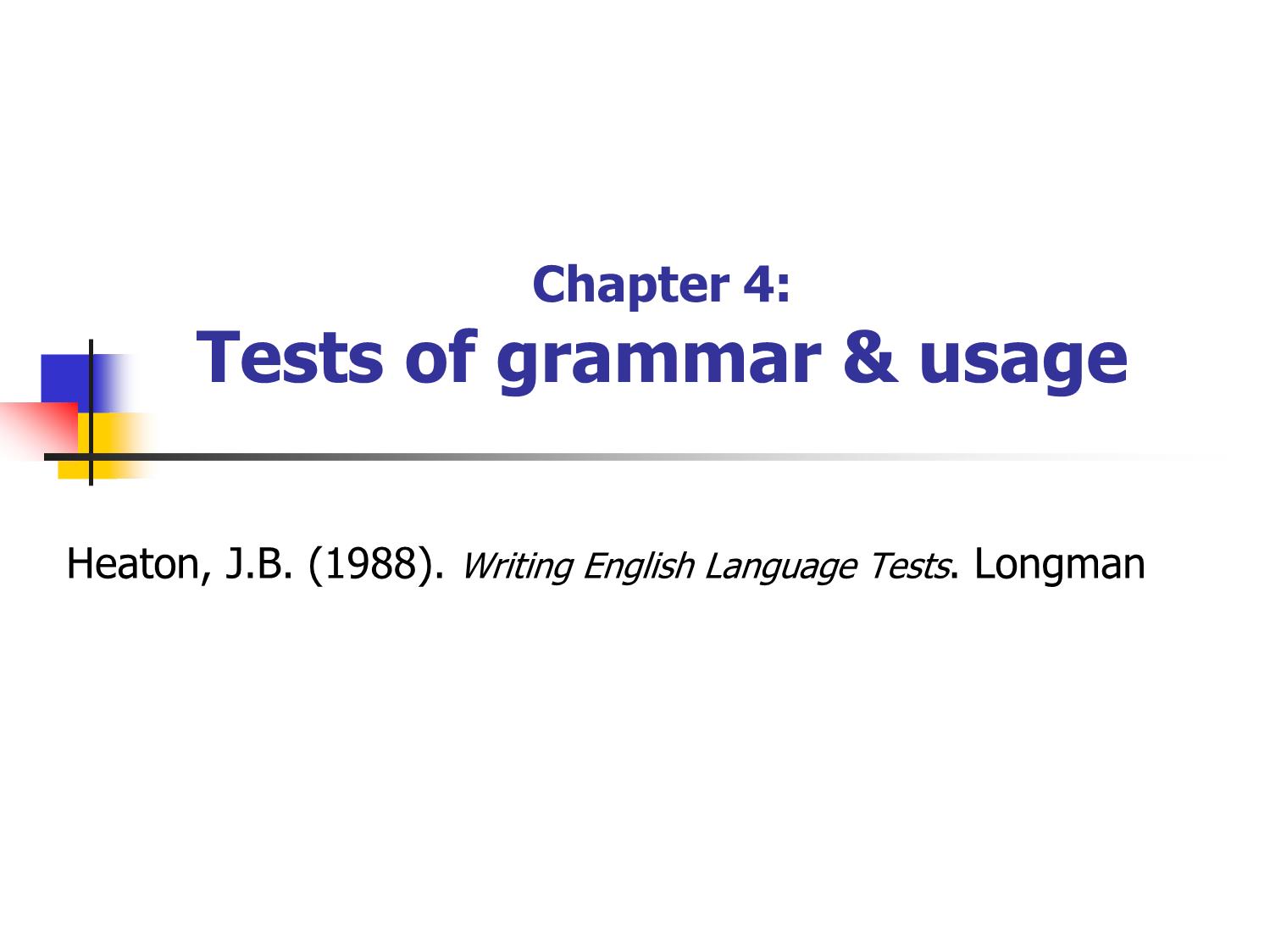
Trang 1
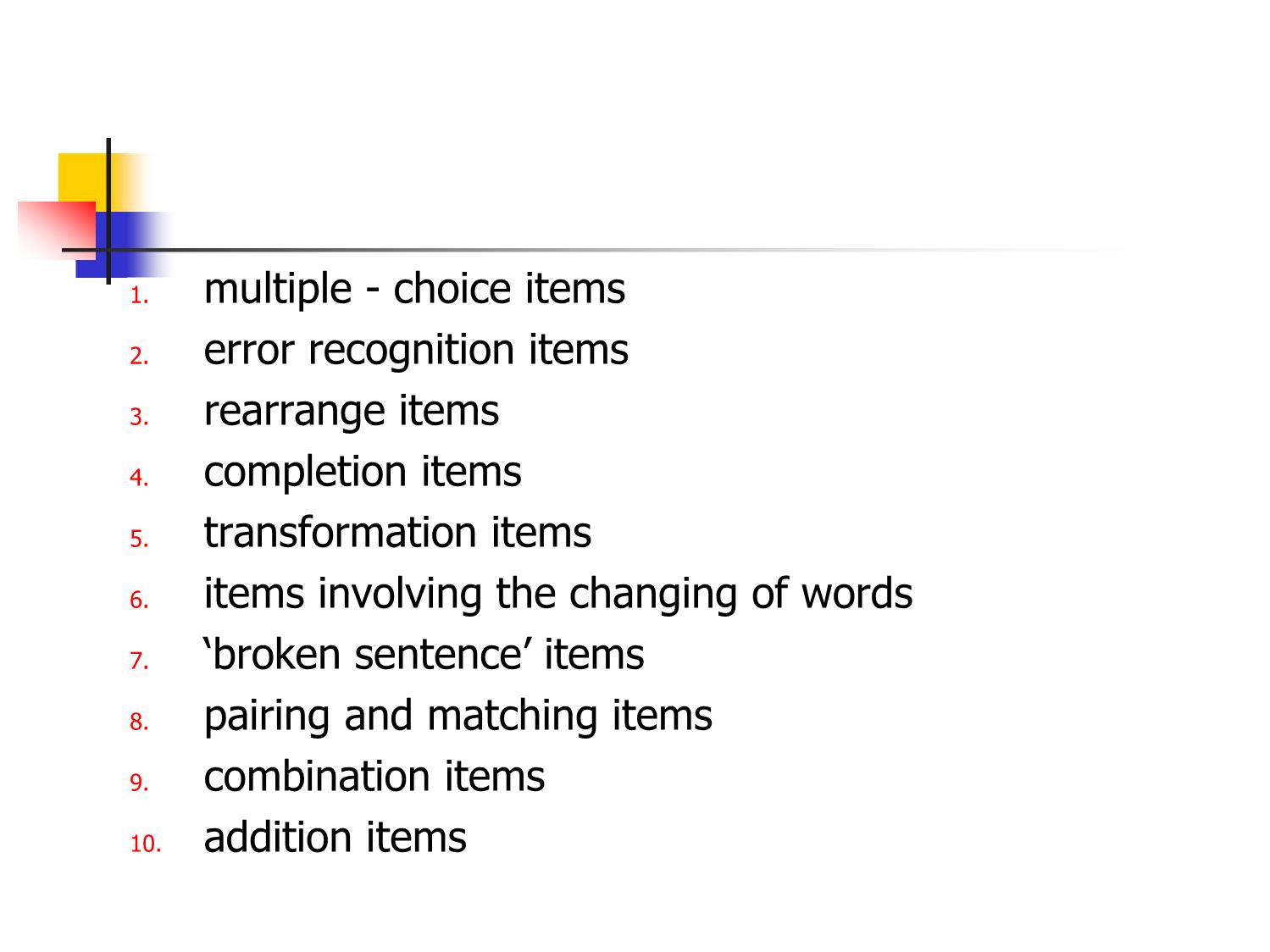
Trang 2
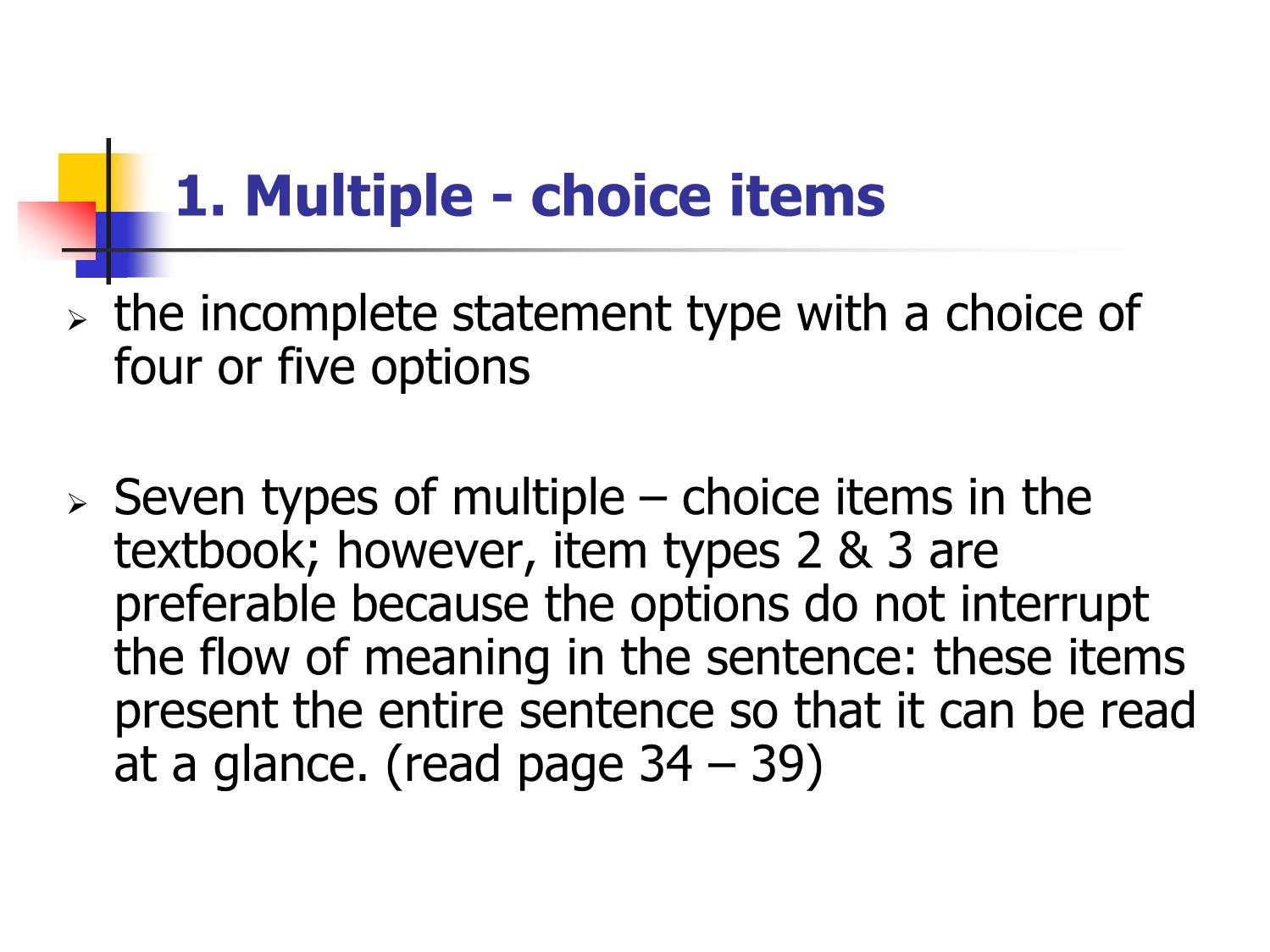
Trang 3
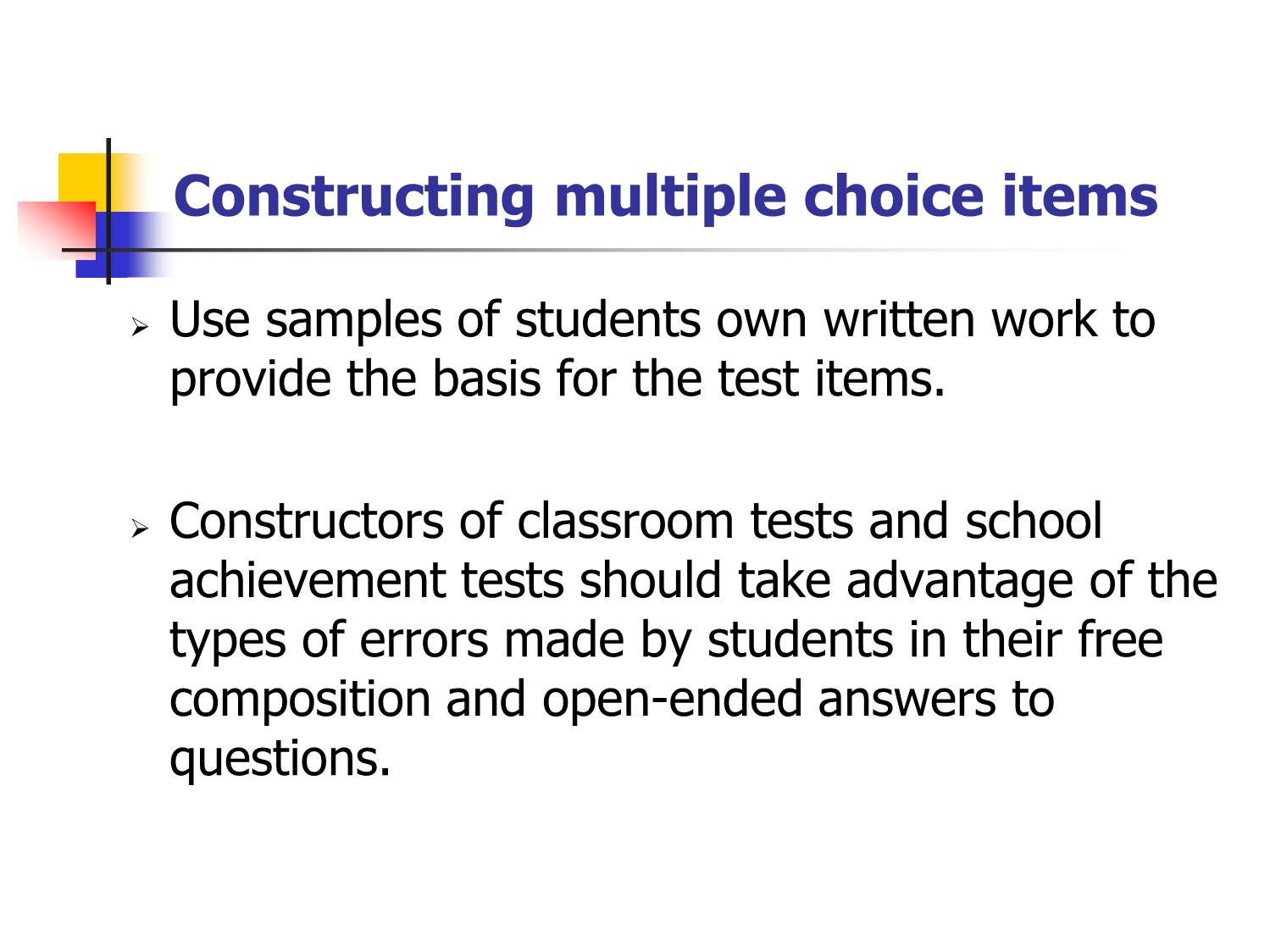
Trang 4
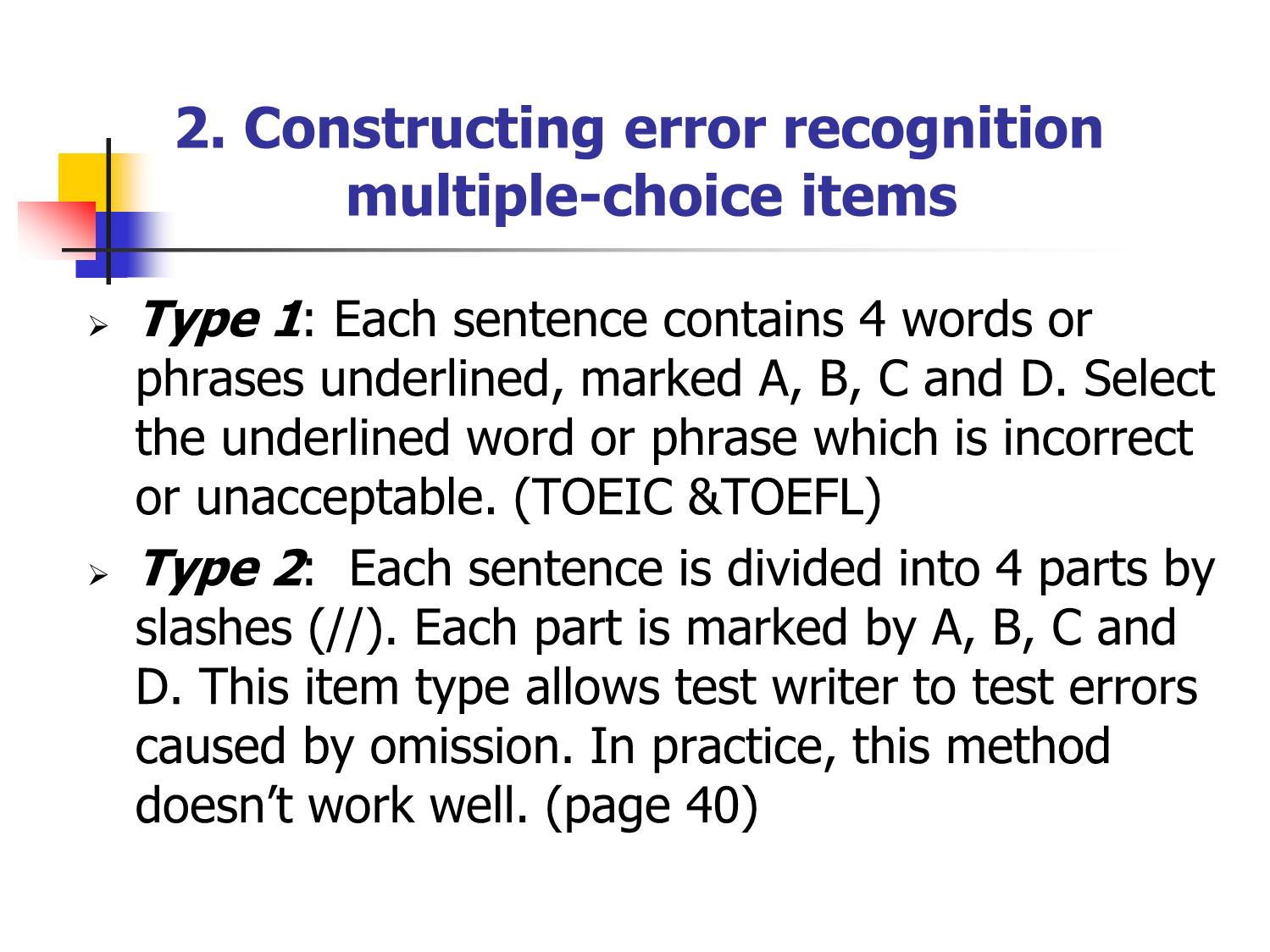
Trang 5
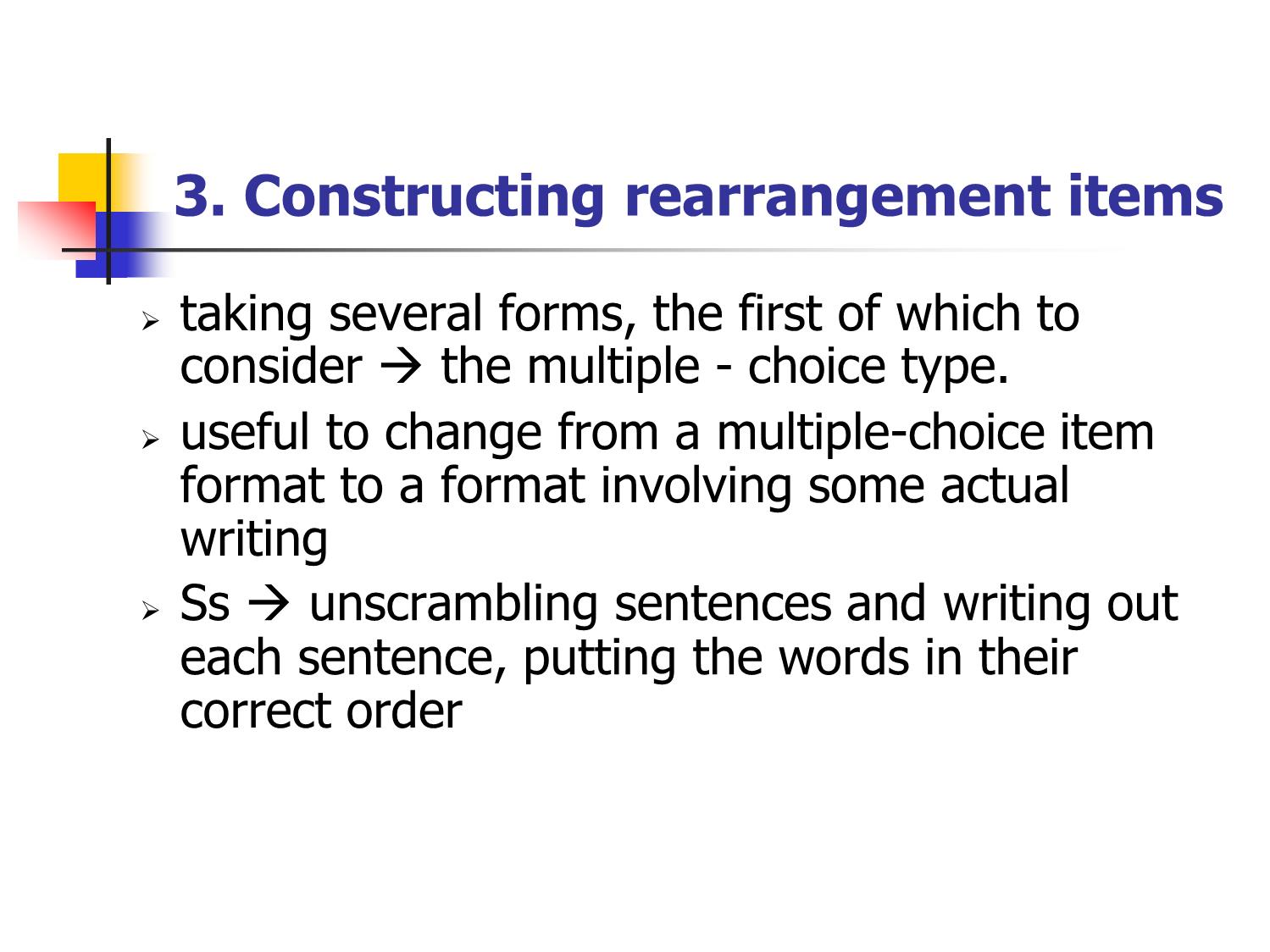
Trang 6
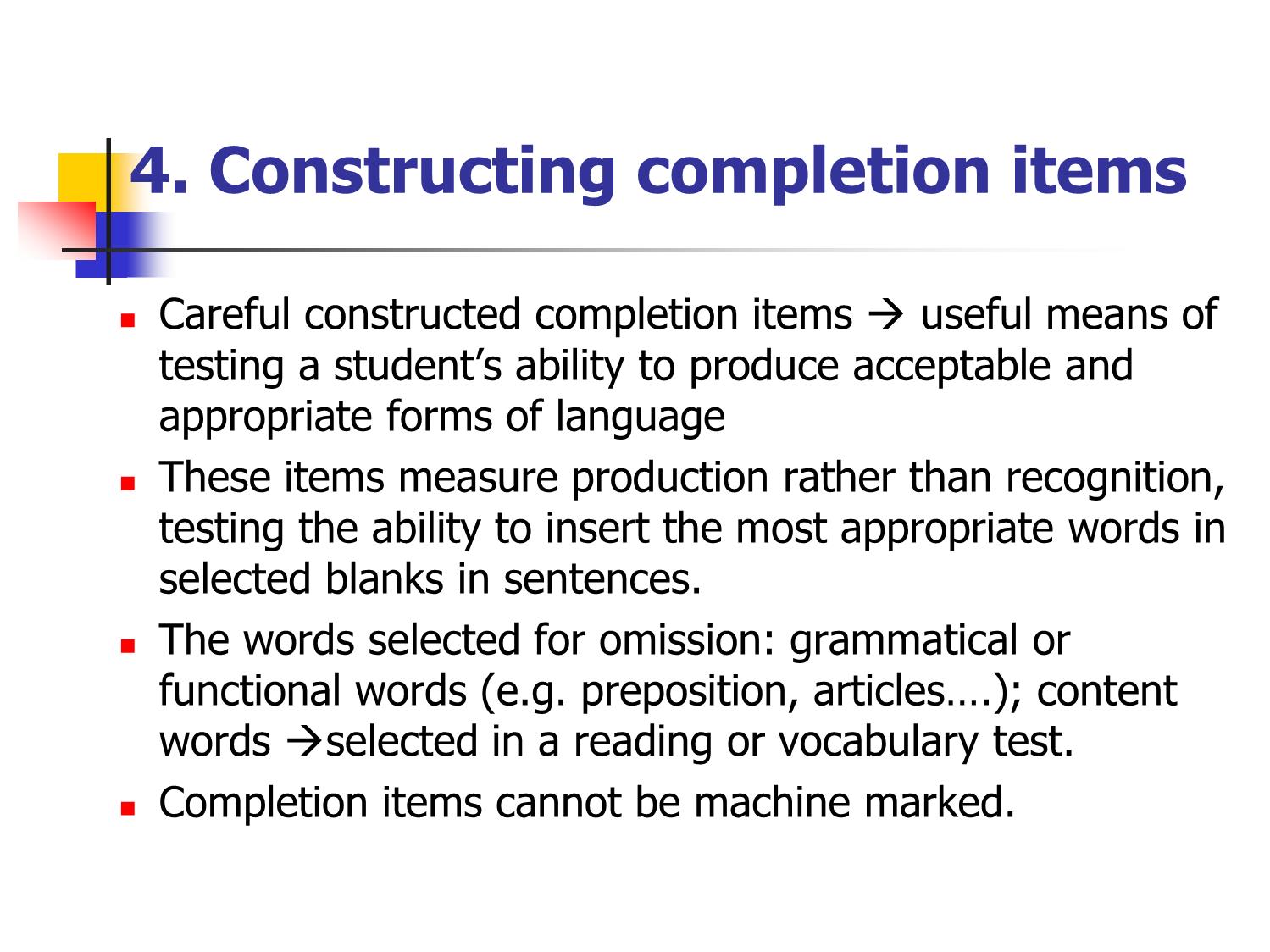
Trang 7
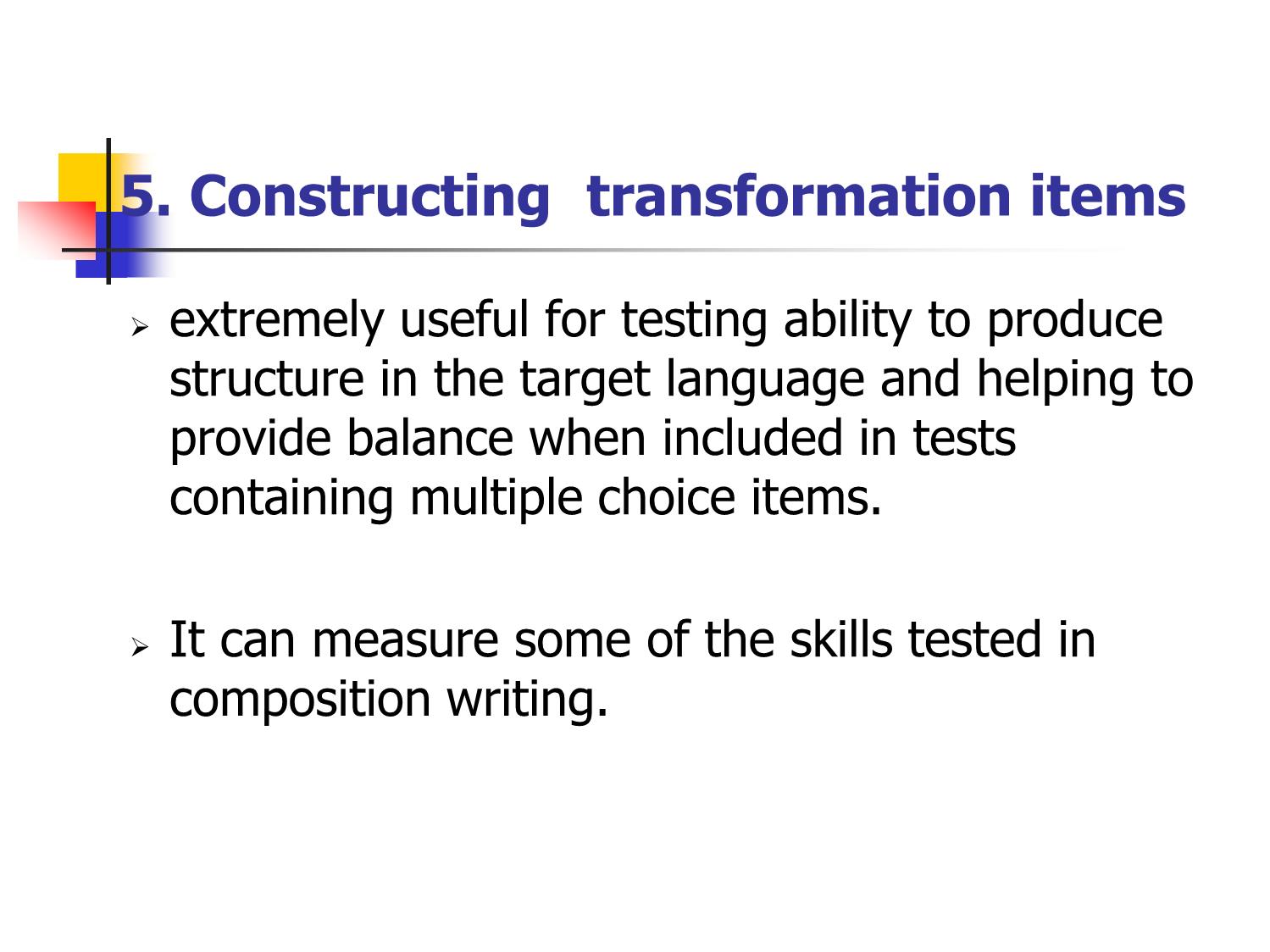
Trang 8
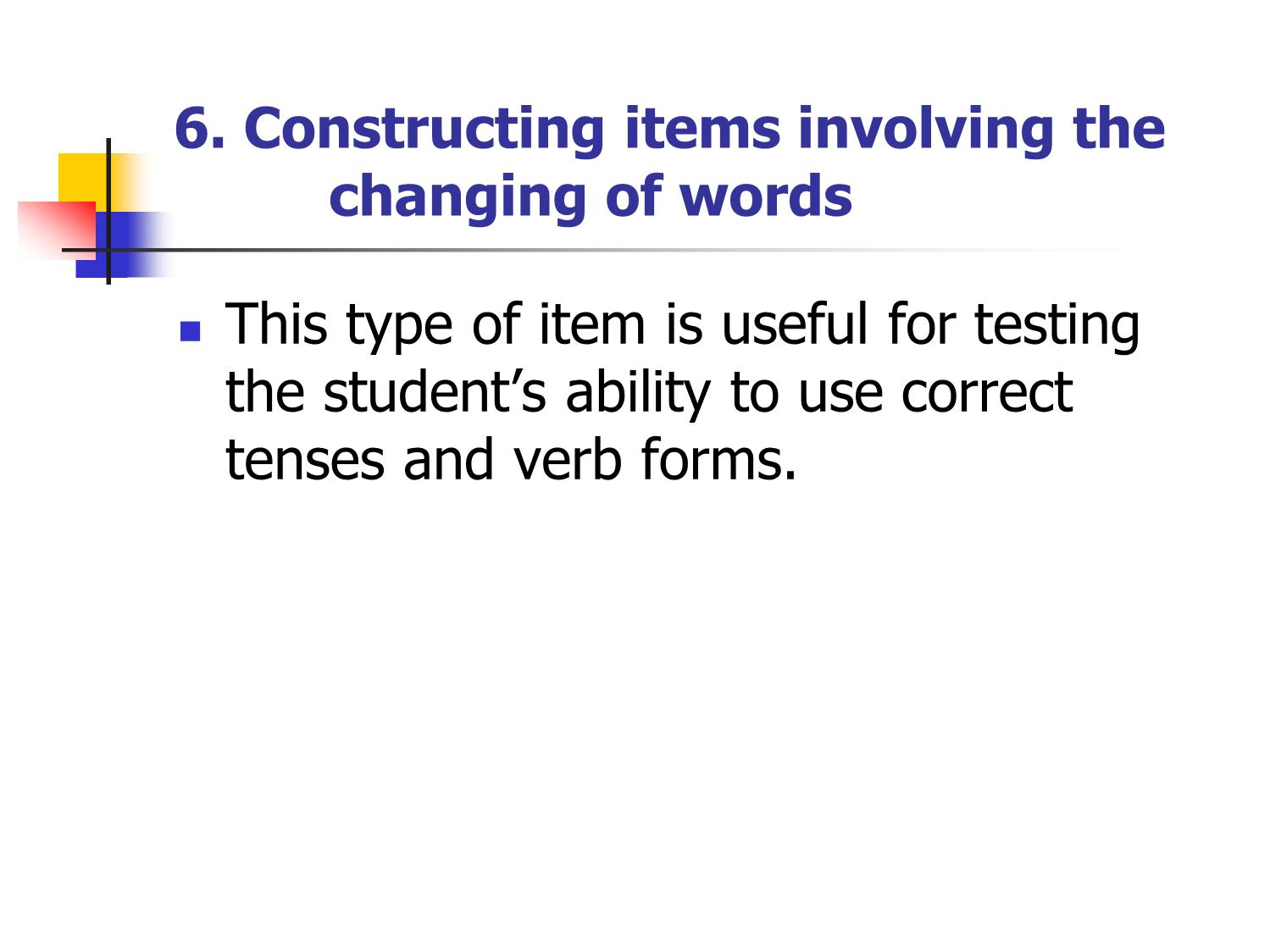
Trang 9
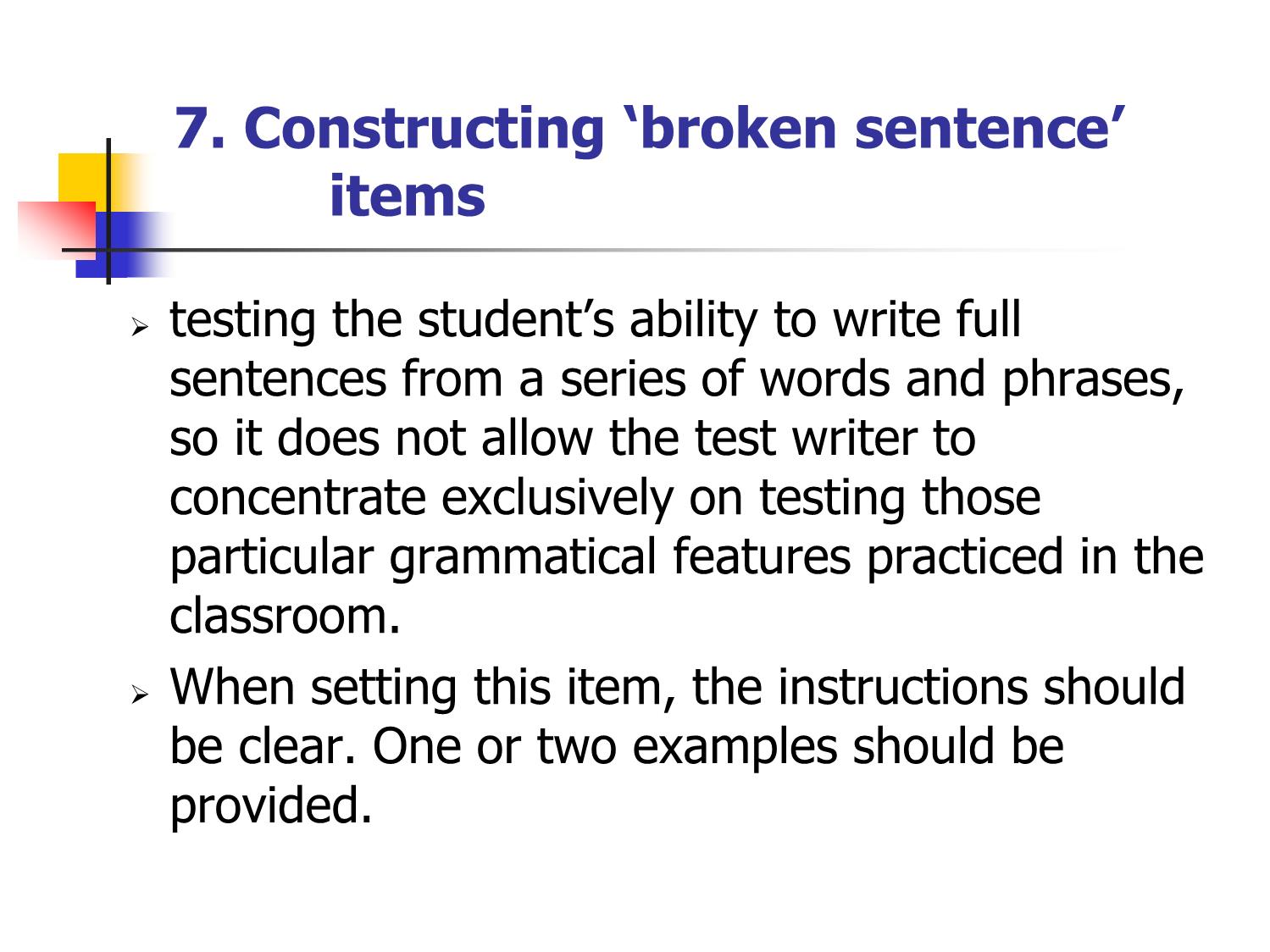
Trang 10
Tải về để xem bản đầy đủ
Bạn đang xem 10 trang mẫu của tài liệu "Bài giảng Phương pháp kiểm tra và đánh giá học tập - Chapter 4: Tests of grammar & usage", để tải tài liệu gốc về máy hãy click vào nút Download ở trên
Tóm tắt nội dung tài liệu: Bài giảng Phương pháp kiểm tra và đánh giá học tập - Chapter 4: Tests of grammar & usage
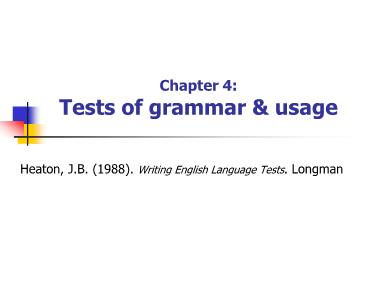
Chapter 4: Tests of grammar & usage Heaton, J.B. (1988). Writing English Language Tests. Longman 1. multiple - choice items 2. error recognition items 3. rearrange items 4. completion items 5. transformation items 6. items involving the changing of words 7. ‘broken sentence’ items 8. pairing and matching items 9. combination items 10. addition items 1. Multiple - choice items the incomplete statement type with a choice of four or five options Seven types of multiple – choice items in the textbook; however, item types 2 & 3 are preferable because the options do not interrupt the flow of meaning in the sentence: these items present the entire sentence so that it can be read at a glance. (read page 34 – 39) Constructing multiple choice items Use samples of students own written work to provide the basis for the test items. Constructors of classroom tests and school achievement tests should take advantage of the types of errors made by students in their free composition and open-ended answers to questions. 2. Constructing error recognition multiple-choice items Type 1: Each sentence contains 4 words or phrases underlined, marked A, B, C and D. Select the underlined word or phrase which is incorrect or unacceptable. (TOEIC &TOEFL) Type 2: Each sentence is divided into 4 parts by slashes (//). Each part is marked by A, B, C and D. This item type allows test writer to test errors caused by omission. In practice, this method doesn’t work well. (page 40) 3. Constructing rearrangement items taking several forms, the first of which to consider the multiple - choice type. useful to change from a multiple-choice item format to a format involving some actual writing Ss unscrambling sentences and writing out each sentence, putting the words in their correct order 4. Constructing completion items Careful constructed completion items useful means of testing a student’s ability to produce acceptable and appropriate forms of language These items measure production rather than recognition, testing the ability to insert the most appropriate words in selected blanks in sentences. The words selected for omission: grammatical or functional words (e.g. preposition, articles.); content words selected in a reading or vocabulary test. Completion items cannot be machine marked. 5. Constructing transformation items extremely useful for testing ability to produce structure in the target language and helping to provide balance when included in tests containing multiple choice items. It can measure some of the skills tested in composition writing. 6. Constructing items involving the changing of words This type of item is useful for testing the student’s ability to use correct tenses and verb forms. 7. Constructing ‘broken sentence’ items testing the student’s ability to write full sentences from a series of words and phrases, so it does not allow the test writer to concentrate exclusively on testing those particular grammatical features practiced in the classroom. When setting this item, the instructions should be clear. One or two examples should be provided. 8. Constructing pairing and matching items Usually consisting of a short conversation: e.g. a stimulus in the form of a statement or question followed by a response often in the form of a statement Used to test ability to select appropriate responses to stimuli which would be presented orally in normal everyday situations Useful for testing students’ sensitivity to appropriacy and their awareness of the functions of the language rather than the knowledge of grammar 9. Constructing combination & addition items These objective type items have long been used in past tests. They should be used sparingly as they involve largely mechanical responses.
File đính kèm:
 bai_giang_phuong_phap_kiem_tra_va_danh_gia_hoc_tap_chapter_4.pdf
bai_giang_phuong_phap_kiem_tra_va_danh_gia_hoc_tap_chapter_4.pdf

